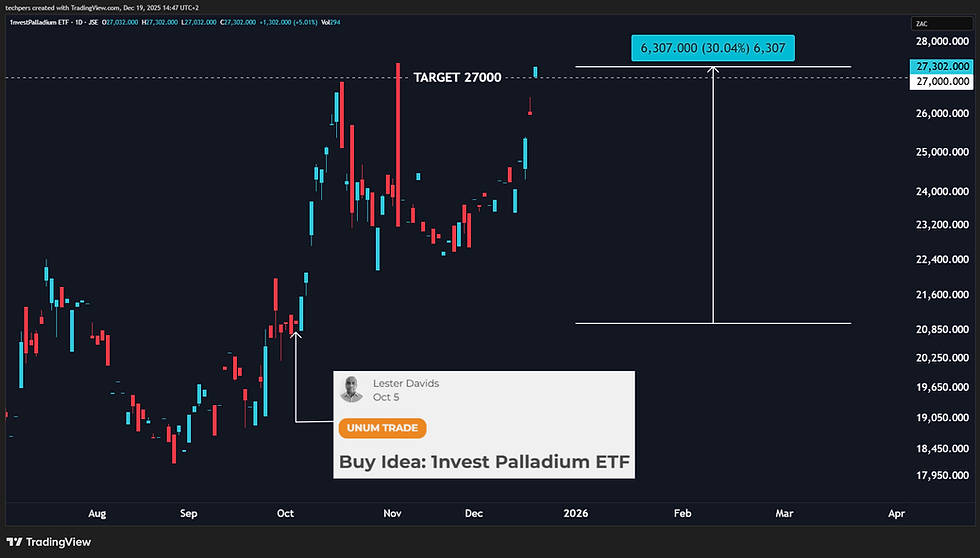Trading S&P 500 Index: A 20% Rebound; Now In Overbought Range
- Lester Davids

- May 18
- 2 min read
Research Notes For 19 to 24 May > https://www.unum.capital/post/r1924may
Trade Local & Global Financial Markets with Unum Capital.
To get started, email tradingdesk@unum.co.za

Since highlighting the Market Risk Index on Wednesday 09 April, the S&P 500 has rebounded 20%.
Current 7-day trend: Overbought
Current 14-day trend: Very Bullish
Opportunity for a short-term buy/long position? Buyers are in control, but there is weakness. A lower time frame look for a pullback to the 8 or 21-EMA (buy range) before the next move higher is suggested.
Opportunity for a short-term sell/short position? Not explicitly mentioned for the short term.
Current position & trend for the short term (1 to 10 days): Buyers in control but with weakness, looking for a pullback to buy.
Current position & trend for the medium term (2 to 4 weeks): Steady upward trend with possible consolidation around these levels.
Current position & trend for the long term (5 to 8 weeks): Attempting to advance whilst in a bullish regime. If it pulls back use the prior session close or 8-EMA as an accumulation zone.

Previous Post (09 April): Market Risk Index: The Weekly Reading Is Worth Noting!
*Weekly Time Frame* - Current

*Monthly Time Frame* - Current

The indicator is a custom-built risk and sentiment index, designed to assess market risk appetite, including whether sentiment is at an extreme position (i.e. excessively bullish or excessively bearish).
Components:
Copper: Copper often serves as a proxy for global economic activity. A decline in copper prices could signal slowing economic growth, increasing risk.
High Beta vs Low Beta: High beta stocks tend to be more volatile than low beta stocks. A widening spread between high and low beta returns might indicate increased risk aversion.
Growth vs Value: Growth stocks typically outperform value stocks in bull markets. A shift towards value stocks could suggest investors are becoming more cautious.
EM Currencies: Emerging market currencies can be sensitive to risk appetite. A weakening of EM currencies could signal increased risk aversion.
AUD/USD: The Australian Dollar is often used as a proxy for global risk sentiment. A decline in AUD/USD could indicate increased risk aversion.
Consumer Staples vs Consumer Discretionary: Consumer staples are generally considered defensive assets. A shift towards consumer staples could suggest investors are seeking safety.
Semiconductors vs S&P 500: The semiconductor sector is cyclical and sensitive to economic downturns. Underperformance of semiconductors relative to the broader market could signal increased risk.
Russell 2000 ETF: This ETF tracks small-cap stocks, which are generally considered riskier than large-cap stocks. Underperformance of the Russell 2000 could suggest increased risk aversion.
U.S. Dollar Index (Inverse): A strengthening US Dollar often signals a flight to safety, suggesting increased risk aversion.




Comments